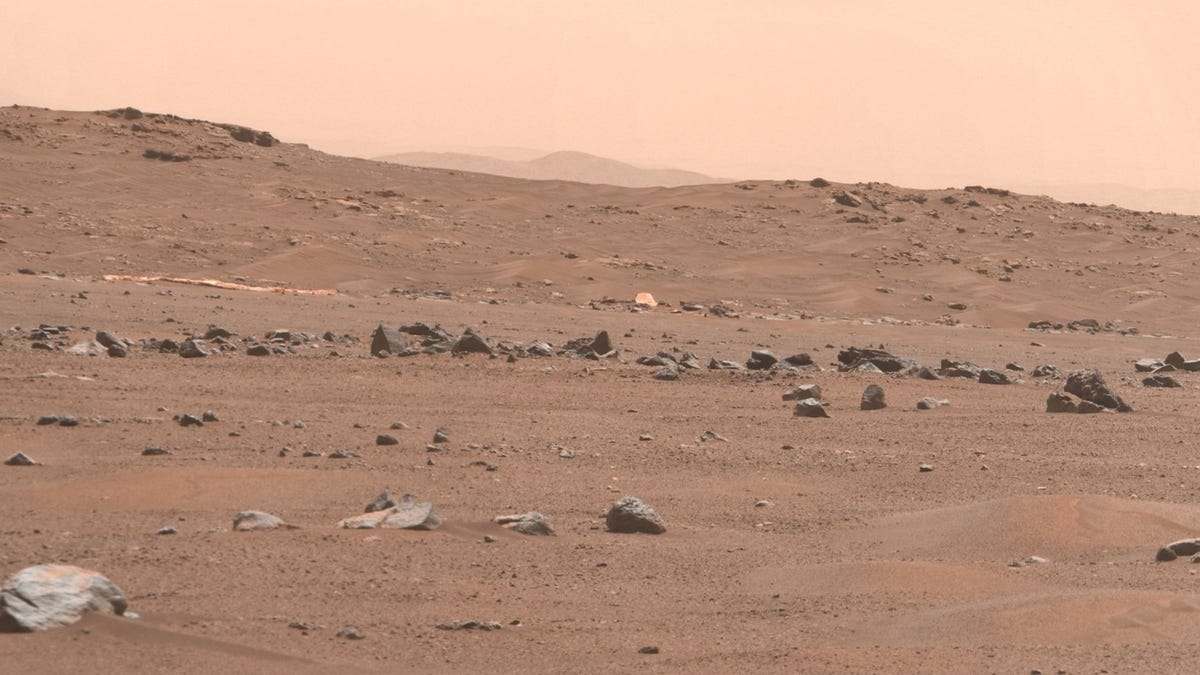NASA Perseverance Mars Rover Snaps Wreckage of Its Own Landing System
Wind and dust have made a mark on Percy's parachute and back shell.
NASA's Perseverance rover is hightailing it to a fascinating river delta region in the Jezero Crater on Mars. But to get there, it first had to pass near its original landing site. Images from there are a trip down memory lane, back to when Percy dramatically landed on the red planet in February 2021.
Steve Ruff, Arizona State University associate research professor and Mars geologist, runs the Mars Guy channel on YouTube. He posted a video on Sunday recapping the rover's arrival on mars and what happened to the parachute and back shell -- two key components of the landing system that delivered Percy safely to the surface.
The video highlights images taken by Perseverance in April in which the dusty parachute and back shell are visible.
Citizen scientist Kevin Gill -- who describes himself as a data wrangler and Martian photographer at NASA-JPL -- also shared a picture of the parachute from April 9 taken by a mast-mounted camera.
Sol 404: Parachute Found.@NASAPersevere Sol 404 pic.twitter.com/sExaxitYHu
— Kevin M. Gill (@kevinmgill) April 10, 2022
By snapping its own landing debris, Perseverance is documenting relics left behind by the mission. Imagine a day in the future when humans roam Mars and visit the historic site of Percy's arrival. Perhaps a plaque would be in order: "On February 18, 2021, NASA's Perseverance rover landed on Mars. Here lie remnants of its landing system."


